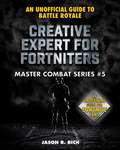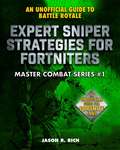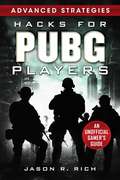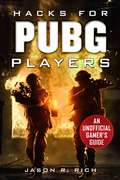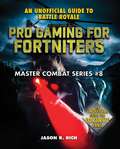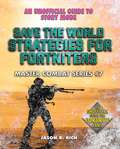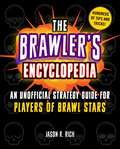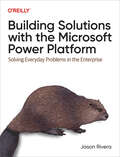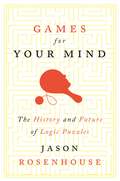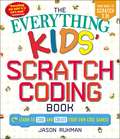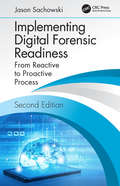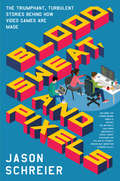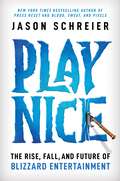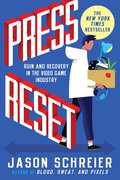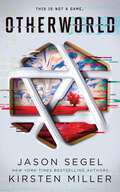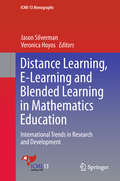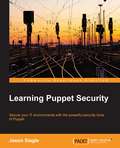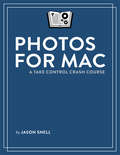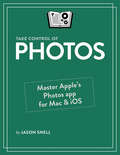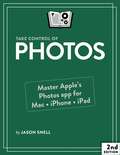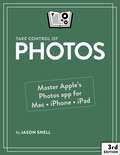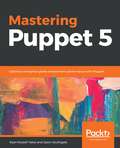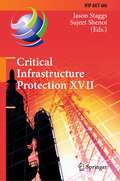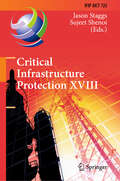- Table View
- List View
Creative Expert for Fortniters: An Unofficial Guide to Battle Royale (Master Combat #5)
by Jason RichGet the most out of Fortnite Battle Royale&’s popular Creative mode with Creative Expert. This all-new, unofficial, illustrated guide series will turn you into a master Fortnite: Battle Royale gamer by uncovering all the best strategies and secrets of this wildly popular game. Whether you play Fortnite: Battle Royale on a PC, Mac, Xbox One, PlayStation 4, or your mobile device, you&’ll find everything you need to stay at the top of your game. Each book is packed with useful insider tips on topics like, staying alive longer, exploring, collecting a powerful arsenal, building, and snagging more victories during each match. When it comes to achieving #1 Victory Royale, the Fortnite Battle Royale: Master Combat Series provides the ultimate competitive edge. Thanks to this illustrated how-to guide, you can create inspired custom builds and design a unique environment for hosting matches of up to 16 players. There are plenty of tools available in Creative mode to make your own island designs from scratch. This book will take you through each one and give you tips for staging incredible combat scenarios and customizing fighting locations so you and your online friends can be challenged in ways you&’ve never experienced before. Have fun being the master of your Fortnite world with Creative Expert.
Expert Sniper Strategies for Fortniters: An Unofficial Guide to Battle Royale (Master Combat)
by Jason RichHit your target every time with this Fortnite expert sniper guide. This all‑new, unofficial, illustrated guide series will turn you into a master Fortnite: Battle Royale gamer by uncovering all the best strategies and secrets of this wildly popular game. Whether you play Fortnite Battle Royale on a PC, Mac, Xbox One, PlayStation 4, or your mobile device, you’ll find everything you need to stay at the top of your game. Each book is packed with useful insider tips on topics like, staying alive longer, exploring, collecting a powerful arsenal, building, and snagging more victories during each match. When it comes to achieving #1 Victory Royale, the Fortnite Battle Royale: Master Combat Series provides the ultimate competitive edge. Thanks to this comprehensive how‑to Fortnite shooting guide, you’ll gain the crucial battle skills you need to eliminate your enemies like a pro. Sniper rifles and projectile weapons are only as good as the player using them. This comprehensive resource will sharpen your skills and show you how and when to use the incredible range of guns, weapons, tools, and ammunition available during each match. There’s nothing more important in Fortnite than staying alive longer and battling your way to #1 Victory Royale. This straightforward guide has everything you need to prepare for long‑range, mid‑range, and close‑range combat situations so that you can emerge a winner.
Hacks for PUBG Players Advanced Strategies: An Unofficial Gamer's Guide
by Jason RichGamers from around the world have made PUBG (a.k.a. PlayerUnderground’s Battlegrounds) one of the most popular games on the PC, PlayStation 4, Xbox One, and on multiple mobile device platforms. This multiplayer combat royale game features fast action, photorealistic graphics, and intense combat scenarios that pit each gamer against up to 99 others during each exciting match. Since only one gamer ends each match victorious, PUBG is difficult for even the most skilled and experienced players to master. Those craving victory need every possible advantage they can get, and Hacks for PUBG Players: Advanced Strategies will provide the proven tips, strategies, and guidance needed to improve a player’s chance of survival during each match they experience, regardless of which gaming platform they’re using. <p><p> To assist gamers develop their PUBG gaming skills and specialized fighting techniques, Hacks for PUBG Players Advanced Strategies will showcase more advanced fighting, exploration, and survival strategies that can help lead a reader to victory! This book will pick up where Hacks for PUBG Players leaves off, and provide more detail, and delve deeper into the more technical aspects of choosing and using weapons, armor, vehicles, tools, and health-related items. Using hundreds of full-color screenshots, Hacks for PUBG Players Advanced Strategies will be a “must read” for more experienced PUBG players looking to give themselves an edge during even the most intense combat situations.
Hacks for PUBG Players: An Unofficial Gamer's Guide
by Jason RichBefore there was Fortnite: Battle Royale, PUBG was the multiplayer combat game that took the world by storm with its fast action, photorealistic graphics, and intense combat scenarios that pitted each gamer against up to 99 others in a real-time battle royale. Only one soldier can win each high intensity match. Survival depends on a gamer’s speed, shooting accuracy, combat strategy, and ability to safely get around the island where each match takes place. During each match, gamers are forced to battle against up to 99 other players, who are often unpredictable in terms of their actions and fighting techniques. This requires gamers to constantly tweak their strategies as new combat situations arise and different challenges present themselves around every turn. To help gamers develop their PUBG gaming skills and specialized fighting techniques, PUBG Hacks introduces new gamers to Playerunknown’s Battlegrounds, provides detailed directions on how to play like a pro on all compatible gaming platforms, and offers fighting, exploration, and survival strategies that can help lead a reader to victory! Using hundreds of full-color screenshots and easy-to-understand directions, PUBG Hacksis a “must read” for newbies as well as more experienced PUBG players looking to enhance their skills. This unofficial guide covers: How to get started playing PUBG on any gaming platform.Ways to customize a soldier with in-game purchases and items that get unlocked during gameplay by completing objectives.How to use popular types of weapons offered within the game.Proven combat strategies and survival tactics.Ways to safely navigate around the island on foot and using vehicles.How to use the island’s terrain to a soldier’s advantage.Strategies for successfully launching surprise attacks and ambushes.Techniques for outsmarting adversaries and surviving incoming attacks.Creative ways to use weapons, ammo, and tools to a player’s advantage.
Pro Gaming for Fortniters: An Unofficial Guide to Battle Royale (Master Combat #8)
by Jason RichFor Any Gamer who Has Dreamed of Joining a Pro Gaming Team and Bringing Home $100 Million in Prize Money! Find out what it takes to enter, win, and eventually work your way toward the ultimate live gaming competition: the Fortnite World Cup. Pro Gaming for Fortniters will tell you everything you need to know to compete from home (for free!) in some of the most exciting and lucrative showdowns on Earth. Using the valuable tips in this illustrated, information-packed guide, you&’ll be better equipped to: train for and enter the world of competitive gamingupgrade your gaming equipment so you have what you need to winstream your game play experiences online for an audienceprogress to more advanced Fortnite contests and become a member of a pro-gaming teamdiscover crucial winning strategies, and showcase your talents for all to see Whether you play Fortnite: Battle Royale on a PC, Mac, Xbox One, PlayStation 4, Nintendo Switch, or your mobile device, inside you&’ll find the essential tips and secrets you need to be taken seriously in the world of pro gaming. With this illustrated, easy-to-use guide, you&’ll gain crucial inside information that can turn your dream into a reality. Pro Gaming for Fortniters provides the ultimate, unofficial player advantage for gaming experts in the making.
Save the World Strategies for Fortniters: An Unofficial Guide to Story Mode (Master Combat #7)
by Jason RichComplete the hardest missions, defeat your enemies, and save the world with this all-new, all-encompassing guide book! Fortnite: Save the World is the #1 cooperative player-versus-environment gaming adventure out there. Building on the combat and survival skills of Fortnite: Battle Royale, Save the World offers a uniquely challenging experience. Using the valuable tips in this illustrated, information-packed guide, you&’ll be better equipped to: Catapult your four-person team to victory by completing even the toughest missionsAvoid the catastrophic storm and battle the zombies that are bent on destroying you. Build weapons and structures, explore, gather resources, and manage your inventory like a pro Whether you play Fortnite: Battle Royale on a PC, Mac, Xbox One, PlayStation 4, Nintendo Switch, or your mobile device, inside you&’ll find the essential tips and secrets you need to snag more victories and achieve your objectives. This illustrated, easy-to-use guide gives you the rundown of all things Save the World so you can play like a pro. Save the World Strategies for Fortniters provides the ultimate, unofficial, competitive advantage for new and experienced gamers alike.
The Brawler's Encyclopedia: An Unofficial Strategy Guide for Players of Brawl Stars
by Jason RichThe Must-Own Insider's Guide to the Gaming Sensation! Brawl Stars is one of the latest real-time multiplayer gaming phenomena to captivate players all over the world. Players team up in threes to navigate mazes, shoot at enemies, and collect colorful gem stones. In order to triumph, players must react quickly, aim precisely, and develop strategy to perform well in each three-minute match. To keep the game interesting, Brawl Stars offers several unique game play modes, each focusing on a different primary challenge. With the valuable tips in this illustrated, information-packed guide, gamers will be better equipped to: Develop strategies for success at each different level. Master the various playing arenas (mazes) and snag more wins. Take advantage of the unique features of each gameplay mode. The Brawler's Encyclopedia will introduce young readers to this exciting and challenging game. This full-color how-to guide includes hundreds of full-color screenshots showcasing some of the more collectible skins that can be unlocked or purchase and explaining all aspects of the game in a way that appeals to newbs and experienced gamers.
Building Solutions with the Microsoft Power Platform: Solving Everyday Problems in the Enterprise
by Jason RiveraWith the accelerating speed of business and the increasing dependence on technology, companies today are significantly changing the way they build in-house business solutions. Many now use low-code and no code technologies to help them deal with specific issues, but that's just the beginning. With this practical guide, power users and developers will discover ways to resolve everyday challenges by building end-to-end solutions with the Microsoft Power Platform.Author Jason Rivera, who specializes in SharePoint and the Microsoft 365 solution architecture, provides a comprehensive overview of how to use the Power Platform to build end-to-end solutions that address tactical business needs. By learning key components of the platform, including Power Apps, Power Automate, and Power BI, you'll be able to build low-code and no code applications, automate repeatable business processes, and create interactive reports from available data.Learn how the Power Platform apps work togetherIncorporate AI into the Power Platform without extensive ML or AI knowledgeCreate end-to-end solutions to solve tactical business needs, including data collection, process automation, and reportingBuild AI-based solutions using Power Virtual Agents and AI Builder
Games for Your Mind: The History and Future of Logic Puzzles
by Jason RosenhouseA lively and engaging look at logic puzzles and their role in recreation, mathematics, and philosophyLogic puzzles were first introduced to the public by Lewis Carroll in the late nineteenth century and have been popular ever since. Games like Sudoku and Mastermind are fun and engrossing recreational activities, but they also share deep foundations in mathematical logic and are worthy of serious intellectual inquiry. Games for Your Mind explores the history and future of logic puzzles while enabling you to test your skill against a variety of puzzles yourself.In this informative and entertaining book, Jason Rosenhouse begins by introducing readers to logic and logic puzzles and goes on to reveal the rich history of these puzzles. He shows how Carroll's puzzles presented Aristotelian logic as a game for children, yet also informed his scholarly work on logic. He reveals how another pioneer of logic puzzles, Raymond Smullyan, drew on classic puzzles about liars and truthtellers to illustrate Kurt Gödel's theorems and illuminate profound questions in mathematical logic. Rosenhouse then presents a new vision for the future of logic puzzles based on nonclassical logic, which is used today in computer science and automated reasoning to manipulate large and sometimes contradictory sets of data.Featuring a wealth of sample puzzles ranging from simple to extremely challenging, this lively and engaging book brings together many of the most ingenious puzzles ever devised, including the "Hardest Logic Puzzle Ever," metapuzzles, paradoxes, and the logic puzzles in detective stories.
The Everything Kids' Scratch Coding Book: Learn to Code and Create Your Own Cool Games! (Everything® Kids)
by Jason RukmanTeach kids the concepts of coding in easy-to-understand language and help them develop games of their own with The Everything Kids’ Scratch Coding Book!Understanding computer science is becoming a necessity in the modern age. As our world shifts towards becoming increasingly more technical and automated, the ability to code and understand computers has become one of the most valuable skills any child can have on the road to a successful life. More and more schools are recognizing this importance and have started to implement computer science and coding as core elements in their curriculums, right alongside math and history. The Everything Kids’ Scratch Coding Book helps children get a head start on this new essential skill, with Scratch coding—a language designed by MIT specifically to help a younger audience learn to code. In no time, children will learn basic coding concepts, build fun games, and get a competitive edge on their classmates. This book encourages children to think analytically and problem-solve, while helping them develop an essential skill that will last them a lifetime.
Implementing Digital Forensic Readiness: From Reactive to Proactive Process, Second Edition
by Jason SachowskiImplementing Digital Forensic Readiness: From Reactive to Proactive Process, Second Edition presents the optimal way for digital forensic and IT security professionals to implement a proactive approach to digital forensics. The book details how digital forensic processes can align strategically with business operations and an already existing information and data security program. Detailing proper collection, preservation, storage, and presentation of digital evidence, the procedures outlined illustrate how digital evidence can be an essential tool in mitigating risk and redusing the impact of both internal and external, digital incidents, disputes, and crimes. By utilizing a digital forensic readiness approach and stances, a company’s preparedness and ability to take action quickly and respond as needed. In addition, this approach enhances the ability to gather evidence, as well as the relevance, reliability, and credibility of any such evidence. New chapters to this edition include Chapter 4 on Code of Ethics and Standards, Chapter 5 on Digital Forensics as a Business, and Chapter 10 on Establishing Legal Admissibility. This book offers best practices to professionals on enhancing their digital forensic program, or how to start and develop one the right way for effective forensic readiness in any corporate or enterprise setting.
Blood, Sweat, and Pixels: The Triumphant, Turbulent Stories Behind How Video Games Are Made
by Jason SchreierDeveloping video games—hero's journey or fool's errand? The creative and technical logistics that go into building today's hottest games can be more harrowing and complex than the games themselves, often seeming like an endless maze or a bottomless abyss. In Blood, Sweat, and Pixels, Jason Schreier takes readers on a fascinating odyssey behind the scenes of video game development, where the creator may be a team of 600 overworked underdogs or a solitary geek genius. Exploring the artistic challenges, technical impossibilities, marketplace demands, and Donkey Kong-sized monkey wrenches thrown into the works by corporate, Blood, Sweat, and Pixels reveals how bringing any game to completion is more than Sisyphean—it's nothing short of miraculous.Taking some of the most popular, bestselling recent games, Schreier immerses readers in the hellfire of the development process, whether it's RPG studio Bioware's challenge to beat an impossible schedule and overcome countless technical nightmares to build Dragon Age: Inquisition; indie developer Eric Barone's single-handed efforts to grow country-life RPG Stardew Valley from one man's vision into a multi-million-dollar franchise; or Bungie spinning out from their corporate overlords at Microsoft to create Destiny, a brand new universe that they hoped would become as iconic as Star Wars and Lord of the Rings—even as it nearly ripped their studio apart. Documenting the round-the-clock crunches, buggy-eyed burnout, and last-minute saves, Blood, Sweat, and Pixels is a journey through development hell—and ultimately a tribute to the dedicated diehards and unsung heroes who scale mountains of obstacles in their quests to create the best games imaginable.
Play Nice: The Rise, Fall, and Future Of Blizzard Entertainment
by Jason SchreierA NEW YORK TIMES BESTSELLER AND AN NPR BEST BOOK OF 2024 From a New York Times bestselling author and investigative journalist comes The Social Network for the video game industry: a riveting examination of Blizzard Entertainment's rise and shocking downfall—"A fast paced thrill ride, perfect for anyone who has ever played a video game" (Ben Mezrich). For video game fans, the name Blizzard Entertainment was once synonymous with perfection. The renowned company behind classics like Diablo and World of Warcraft was known to celebrate the joy of gaming over all else. What was once two UCLA students' simple mission — to make games they wanted to play — launched an empire with thousands of employees, millions of fans, and billions of dollars. But when Blizzard cancelled a buzzy project in 2013, it gave Bobby Kotick, the infamous CEO of corporate parent Activision, the excuse he needed to start cracking down on Blizzard's proud autonomy. Activision began invading Blizzard from the inside. Glitchy products, PR disasters, mass layoffs, and a staggering lawsuit marred the company's reputation and led to its ultimate reckoning. Based on firsthand interviews with more than 300 current and former employees, Play Nice chronicles the creativity, frustration, beauty, and betrayal across the epic 33-year saga of Blizzard Entertainment, showing us what it really means to "bleed Blizzard blue." Full of colorful personalities and dramatic twists, this is the story of what happens when the ruthless pursuit of profit meets artistic idealism.
Press Reset: Ruin and Recovery in the Video Game Industry
by Jason SchreierFrom the bestselling author of Blood, Sweat, and Pixels comes the next definitive, behind-the-scenes account of the video game industry: how some of the past decade's most renowned studios fell apart—and the stories, both triumphant and tragic, of what happened next.Jason Schreier's groundbreaking reporting has earned him a place among the preeminent investigative journalists covering the world of video games. In his eagerly anticipated, deeply researched new book, Schreier trains his investigative eye on the volatility of the video game industry and the resilience of the people who work in it.The business of videogames is both a prestige industry and an opaque one. Based on dozens of first-hand interviews that cover the development of landmark games—Bioshock Infinite, Epic Mickey, Dead Space, and more—on to the shocking closures of the studios that made them, Press Reset tells the stories of how real people are affected by game studio shutdowns, and how they recover, move on, or escape the industry entirely.Schreier's insider interviews cover hostile takeovers, abusive bosses, corporate drama, bounced checks, and that one time the Boston Red Sox's Curt Schilling decided he was going to lead a game studio that would take out World of Warcraft. Along the way, he asks pressing questions about why, when the video game industry is more successful than ever, it's become so hard to make a stable living making video games—and whether the business of making games can change before it's too late.
Otherworld: Last Reality Series (Last Reality Ser. #1)
by Kirsten Miller Jason Segel"Full of high stakes, thrillers, and fantastic twists and turns, fans of Ready Player One are sure to love this addictive read." —BUZZFEED Welcome to real life 2.0. Are you ready to play? There are no screens. There are no controls. You don&’t just see and hear it – you taste, smell, and touch it too. In this new reality there are no rules to follow, no laws to break. You can live your best life. It&’s a game so addictive you&’ll never want it to end. Until you realize that you&’re the one being played. Step into Otherworld. Leave your body behind. The frightening future that Jason Segel and Kirsten Miller have imagined is not far away. Otherworld asks the question we'll all soon be asking: if technology can deliver everything we want, how much are we willing to pay?
Distance Learning, E-Learning and Blended Learning in Mathematics Education: International Trends in Research and Development (ICME-13 Monographs)
by Jason Silverman Veronica HoyosThis book builds on current and emerging research in distance learning, e-learning and blended learning. Specifically, it tests the boundaries of what is known by examining and discussing recent research and development in teaching and learning based on these modalities, with a focus on lifelong mathematics learning and teaching. The book is organized in four sections: The first section focuses on the incorporation of new technologies into mathematics classrooms through the construction or use of digital teaching and learning platforms. The second section presents a wide range of perspectives on the study and implementation of different tutoring systems and/or computer assisted math instruction. The third section presents four new innovations in mathematics learning and/or mathematics teacher education that involve the development of novel interfaces’ for communicating mathematical ideas and analyzing student thinking and student work. Finally, the fourth section presents the latest work on the construction and implementation of new MOOCs and rich media platforms developed to carry out specialized mathematics teacher education.
Learning Puppet Security
by Jason SlagleIf you are a security professional whose workload is increasing, or a Puppet professional looking to increase your knowledge of security, or even an experienced systems administrator, then this book is for you. This book will take you to the next level of security automation using Puppet. The book requires no prior knowledge of Puppet to get started.
Photos for Mac: A Take Control Crash Course
by Jason SnellMake a smooth transition to Photos for Mac!Make a smooth transition to Photos for Mac with help from Jason Snell, former lead editor at Macworld. As of 10.10.3 Yosemite, Photos has become Apple's core photo app on the Mac, replacing both iPhoto and Aperture.Jason helps you decide whether to transition to Photos right away, walks you through importing photo libraries from iPhoto and Aperture, helps you understand the Photos interface and organize your images, gets you going with the editing tools (including Adjustments), helps you sync with iOS devices or an Apple TV, and looks at creating books, cards, calendars, and slideshows.Particularly helpful is Jason's explanation of how Photos works with iCloud, including using iCloud Photo Library to create a centralized photo library for all your devices and sharing photos with friends and family via iCloud Photo Sharing.Jason answers a bunch of burning questions, including:If I import a library into Photos, can I still edit photos in Aperture or iPhoto?Will Photos require a huge amount of disk space to import my iPhoto library?What should I do about iPhoto or Aperture metadata that doesn't map to Photos?Where's the sidebar?What is the System Photo Library, and why is it important?What should I expect if I turn on iCloud Photo Library?Can I delete iPhoto? What about my old iPhoto library?How do I interpret (or turn off) the icons that overlay my photos?You'll find directions for editing photos, including help with:Using basic editing controls, like rotation and crop.Taking advantage of the blue checkmarks on the Adjustments pane.The utility of each of the special adjustment controls.Creating a default set of adjustments.Applying a specific set of adjustments to more than one photo.Removing a blemish from a face in a photo.Editing a raw file (instead of the JPEG).You'll also find advice about:Why the search field is so important in Photos.Working with keywords, and using the heart-icon Favorite button.Training Photos to recognize a particular face.Setting up albums and smart albums.Sharing an album online via iCloud Photo Sharing.Configuring the Ken Burns effect in a slideshow.Exporting a slideshow as a video file.Using Apple's print service for printing photos.Editing a photo while working in a book, card, or calendar.
Take Control of Photos
by Jason SnellTake control of your photo collection in Photos for Mojave and iOS 12!Get to know Apple's Photos app and how best to use it to import, manage, edit, and share your photos in Mojave and iOS 12! As the successor to Apple's iPhoto and Aperture apps, Photos has a more refined interface and deeper connections to iCloud, and it runs faster. Following the expert advice of Jason Snell, publisher of Six Colors and former lead editor at Macworld, you'll learn how to navigate Photos like a pro!This 156-page book replaces and more than doubles the length of Jason's previous book Photos: A Take Control Crash Course. It's now a full-length Take Control title with much more detail.In this book, you'll learn how to:Migrate your library from iPhoto or Aperture (Apple's discontinued professional photography app) into PhotosImport photos from devices or memory cardsUse multiple Photos librariesNavigate the Photos interface, including the sidebar and iconsView, edit, or disable Live PhotosOrganize your library by using enhanced search features, adding metadata, building albums, and creating smart albumsEdit your photos using quick fixes like cropping, applying filters, and fixing red-eye and rotation problemsUse advanced editing techniques within Photos and edit using external apps like PhotoshopManage your photo collection using the Memories and People features, and get summary viewsSync and share your photos with iCloudView your photos on an Apple TVShare your photos via social media, export them out of Photos, or turn them into slideshowsCreate printed objects (such as books and calendars) from your photos using third-party servicesJason also highlights changes in Photos under iOS 12, including searching for multiple items at once, a For You tab, and an updated Import tab; plus changes in Mojave, including new keyboard shortcuts and the removal of built-in features for making calendars, books, and other printed materials (and alternative means of obtaining them).This book, which is about the new versions of Photos that Apple released in September 2018, covers Photos for macOS version 4.0 in Mojave, as well as Photos in iOS 12 and tvOS 12.
Take Control of Photos
by Jason SnellThis book introduces you to the many features of Apple’s Photos app on Mac, iPad, and iPhone, with advice on navigating the interface, editing your images, searching your library like a pro, syncing with iCloud Photos, sharing photos with others, and creating photo books.
Take Control of Photos
by Jason SnellThis book introduces you to the many features of Apple’s Photos app on Mac, iPad, and iPhone, with advice on navigating the interface, editing your images, searching your library like a pro, syncing with iCloud Photos, sharing photos with others, and creating photo books.
Take Control of Photos
by Jason SnellThis book introduces you to the many features of Apple’s Photos app on Mac, iPad, and iPhone, with advice on navigating the interface, editing your images, searching your library like a pro, syncing with iCloud Photos, sharing photos with others, and creating photo books.
Mastering Puppet 5: Optimize enterprise-grade environment performance with Puppet
by Ryan Russell-Yates Jason SouthgateLeverage Puppet 5 for medium to large scale enterprise deployment.Key FeaturesUse and deploy Puppet 5, irrespective the size of your organizationScaling, performance improvements, and managing multiple developer requestsTroubleshooting techniques, tips and tricks to make the most of Puppet 5Book DescriptionPuppet is a configuration management system and a language written for and by system administrators to manage a large number of systems efficiently and prevent configuration drift.The core topics this book addresses are Puppet's latest features and mastering Puppet Enterprise. You will begin by writing a new Puppet module, gaining an understanding of the guidelines and style of the Puppet community. Following on from this, you will take advantage of the roles and profiles pattern, and you will learn how to structure your code. Next, you will learn how to extend Puppet and write custom facts, functions, types, and providers in Ruby, and also use the new features of Hiera 5. You will also learn how to configure the new Code Manager component, and how to ensure code is automatically deployed to (multiple) Puppet servers. Next, you will learn how to integrate Puppet with Jenkins and Git to build an effective workflow for multiple teams, and use the new Puppet Tasks feature and the latest Puppet Orchestrator language extensions. Finally, you will learn how to scale and troubleshoot Puppet.By the end of the book, you will be able to deal with problems of scale and exceptions in your code, automate workflows, and support multiple developers working simultaneously.What you will learnSolve problems using modules and the roles and profiles patternExtend Puppet with custom facts, functions, types, and providersUse Hiera 5 and Code Manager/r10k to separate code from dataContinuously integrate your code using Jenkins, Git and automated testingUse exported resources and the new Puppet Orchestration featuresExplore Puppet Discovery features and their useTroubleshoot various parts of the Puppet Enterprise infrastructureScale up and scale out Puppet infrastructure using various techniquesWho this book is forIf you are a system administrator or developer who has used Puppet in production and are looking for ways to easily use Puppet in an enterprise environment, this book is for you. Some knowledge of writing simple configuration management modules would be necessary.
Critical Infrastructure Protection XVII: 17th IFIP WG 11.10 International Conference, ICCIP 2023, Arlington, VA, USA, March 13–14, 2023, Revised Selected Papers (IFIP Advances in Information and Communication Technology #686)
by Sujeet Shenoi Jason StaggsThe information infrastructure – comprising computers, embedded devices, networks and software systems – is vital to operations in every sector: chemicals, commercial facilities, communications, critical manufacturing, dams, defense industrial base, emergency services, energy, financial services, food and agriculture, government facilities, healthcare and public health, information technology, nuclear reactors, materials and waste, transportation systems, and water and wastewater systems. Global business and industry, governments, indeed society itself, cannot function if major components of the critical information infrastructure are degraded, disabled or destroyed. Critical Infrastructure Protection XVII describes original research results and innovative applications in the interdisciplinary field of critical infrastructure protection. Also, it highlights the importance of weaving science, technology and policy in crafting sophisticated, yet practical, solutions that will help secure information, computer and network assets in the various critical infrastructure sectors. Areas of coverage include: Themes and IssuesSmart Grid Risks and ImpactsNetwork and Telecommunications Systems SecurityInfrastructure SecurityAutomobile Security This book is the seventeenth volume in the annual series produced by the International Federation for Information Processing (IFIP) Working Group 11.10 on Critical Infrastructure Protection, an international community of scientists, engineers, practitioners and policy makers dedicated to advancing research, development and implementation efforts focused on infrastructure protection. The book contains a selection of eleven edited papers from the Seventeenth Annual IFIP WG 11.10 International Conference on Critical Infrastructure Protection, which was held at SRI International, Arlington, Virginia, USA in the spring of 2023. Critical Infrastructure Protection XVII is an important resource for researchers, faculty members and graduate students, as well as for as well as for policy makers, practitioners and other individuals with interests in homeland security.
Critical Infrastructure Protection XVIII: 18th IFIP WG 11.10 International Conference, ICCIP 2024, Arlington, VA, USA, March 18–19, 2024, Proceedings (IFIP Advances in Information and Communication Technology #725)
by Sujeet Shenoi Jason StaggsThe cyber infrastructure – comprising computers, embedded devices, networks and software systems – is vital to operations in every sector: chemicals, commercial facilities, communications, critical manufacturing, dams, defense industrial base, emergency services, energy, financial services, food and agriculture, government facilities, healthcare and public health, information technology, nuclear reactors, materials and waste, transportation systems, and water and wastewater systems. Global business and industry, governments, indeed society itself, cannot function if major components of the critical infrastructure are degraded, disabled or destroyed.Critical Infrastructure Protection XVIII describes original research results and innovative applications in the interdisciplinary field of critical infrastructure protection. Also, it highlights the importance of weaving together science, technology and policy to craft sophisticated, yet practical, solutions that will help secure information, computer and network assets in the various critical infrastructure sectors. Areas of coverage include: Infrastructure Security Advanced Manufacturing Security Industrial Control System Security Infrastructure Modeling This book is the eighteenth volume in the annual series produced by the International Federation for Information Processing (IFIP) Working Group 11.10 on Critical Infrastructure Protection, an international community of scientists, engineers, practitioners and policy makers dedicated to advancing research, development and implementation efforts focused on infrastructure protection. The book contains a selection of nine edited papers from the Eighteenth Annual IFIP WG 11.10 International Conference on Critical Infrastructure Protection, which was held at SRI International, Arlington, Virginia, USA in the spring of 2024. Critical Infrastructure Protection XVIII is an important resource for researchers, faculty members and graduate students, as well as for policy makers, practitioners and other individuals with interests in homeland security.
